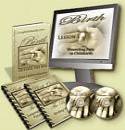Active Labor
Active labor is when birthing becomes more serious. As the mother turns inward and becomes more involved with each contraction, relaxation and breathing become essential. Tuning out distraction and creating a positive environment will be important. You may feel the desire to have your birth companion present but may not want to be touched or bothered at this point.
WHAT & HOW YOU MAY FEEL
- Contractions that are Closer Together and Require Your Attention
- Need for Physical Support
- Need for Emotional Support
- Less Interest in Eating/Drinking
- Desire for Quiet so You can Focus
BEHAVIOR & ATTITUDE
- Turning Inward
- More Focused
- Averse to Distractions
- Restlessness
OTHER SIGNS & SYMPTOMS
- Bloody Show
- Diarrhea
- Rupture of Membranes
- Increased Pressure
- Lightening
- Nausea
MANAGEMENT STRATEGIES
For some women, active labor is still quite comfortable. For others, it will be more intense. The best tip for this phase is observation. This becomes especially important in a hospital birth when the focus can shift from the mother to readings on a monitor. During active labor, you may want to begin timing the intervals between each contraction and their duration. Time from the beginning of one to the beginning of the next. Note how long each one lasts. Don't become too focused on this task because far more can be learned from observing behavior than from the readings on a stopwatch. If the bag of waters ruptures, note the time. Also check the color of the fluid. Note whether it is clear or has a greenish tint. Amniotic fluid should be colorless and odorless, but sometimes may have a slightly sweet smell. If it is greenish in color, this is a sign that the baby has passed meconium (its first bowel movement) which can be a sign of a postdate baby or one that is in distress. It is usually only a concern if the fluid is thick, like the consistency of pea soup. Mild staining is generally not a problem. However, you will want to call your care provider if meconium is present and ask for guidance.
WHAT YOU MIGHT DO
- Change Positions Frequently
- Take a Walk
- Use Water
- Start Massage Techniques
- Listen to a Relaxation Script
- Use Visualization
- Consider the Sleep Breathing Technique
WHAT YOUR Birth COMPANION MIGHT DO
- Keep You Company
- Remind You to Empty Your Bladder Frequently
- Encourage Positional Changes
- Fill the Birth Pool
- Apply Light Touch Massage or Counter Pressure
- Look for Signs of Tension
- Protect Your Birthing Space (Keep it Dark and Quiet)
- Praise You
- Whisper Encouragement or Read a Relaxation Script
- Call the Care Provider for Advice on Going to the Hospital or Birth Center
- Call Your Doula
- Get Homebirth Supplies Ready
GOING TO THE Place of Birth
Staying home as long as possible even into active labor is one of the best ways to ensure a comfortable natural birth. Simply setting foot in a hospital has been shown to increase discomfort in labor by raising anxiety levels and causing labor to slow or even stop.
Before the birth day, take a dry run to the chosen place of birth to determine travel time and potential obstacles, such as construction or weather delays. This will provide better indications of when you will need to leave. If it's a two hour drive, then you'll most likely want to leave a bit earlier than later. If you arrive at the hospital sooner than expected, some couples check into a hotel for a few hours rather than go to the hospital too soon. Bring a towel or some chux pads in the event your water breaks. A trash bag or basket may also be warranted in case you feel carsick. It's much better to travel prepared than the alternative. Also consider bringing a CD player or iPod to listen to a relaxation audio if the ride is long.
Also in advance of the birth day, find out where to park during or after hospital hours, whom to notify at the hospital and what identification you need to bring. Also ask if videotaping is allowed so you can bring equipment if desired. Be sure to keep a copy of your birth plan with you at all times.
If planning a hospital birth, tour the hospital well before the birth day. This allows the perfect opportunity to ask what the admission procedures are, including where you register and any forms you need to read and sign. In many cases, you are able to pre-register before the big day and obtain advance copies of any consent forms to peruse and alter to fit your preferences. If you arrive at the hospital in active labor, you will not want the interruption of pesky consent forms. It's very difficult to make informed decisions while your focus is on birthing your baby. Any pertinent discussions should take place at prenatal appointments well in advance of your due month.
Return from Active Labor to Stages of Labor
Return to Giving Birth Naturally Home
Page Last Modified by Catherine Beier, MS, CBE
Most Popular
How to Use Acupressure to Induce Labor
Childbirth Relaxation Script MP3s
Nutrition During Pregnancy - Nix the Notion of Eating for Two
Looking for a Birth Professional? Search our Provider Directory
Online Childbirth Classes
Choose 7 week, 12 week, or Self- Paced online childbirth classes available wherever and whenever you need them.
Featured Birth Story
Vanessa's natural birth story shows that when birth is left alone to proceed as it should, it waits for no one - not even doctors or midwives.
Free Pregnancy Tickers
Create a free pregnancy ticker to post on your blog, website, Facebook profile or favorite social media...




